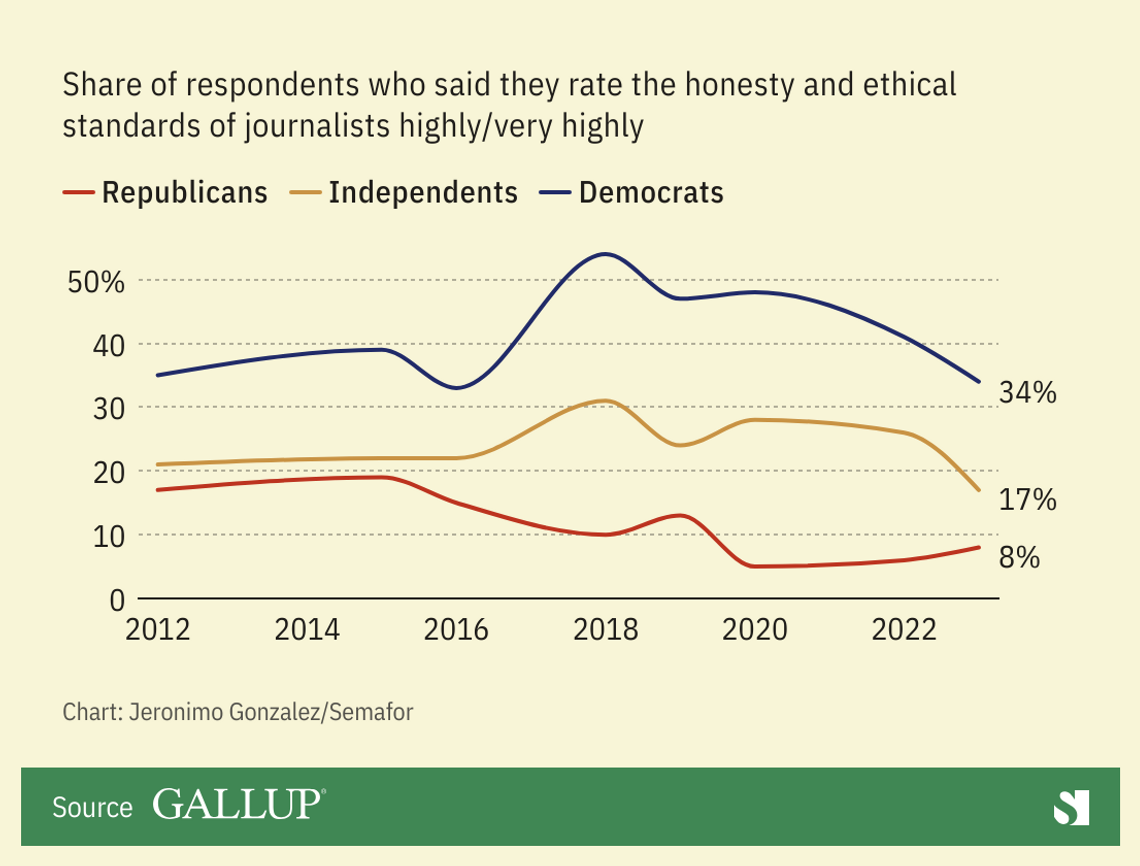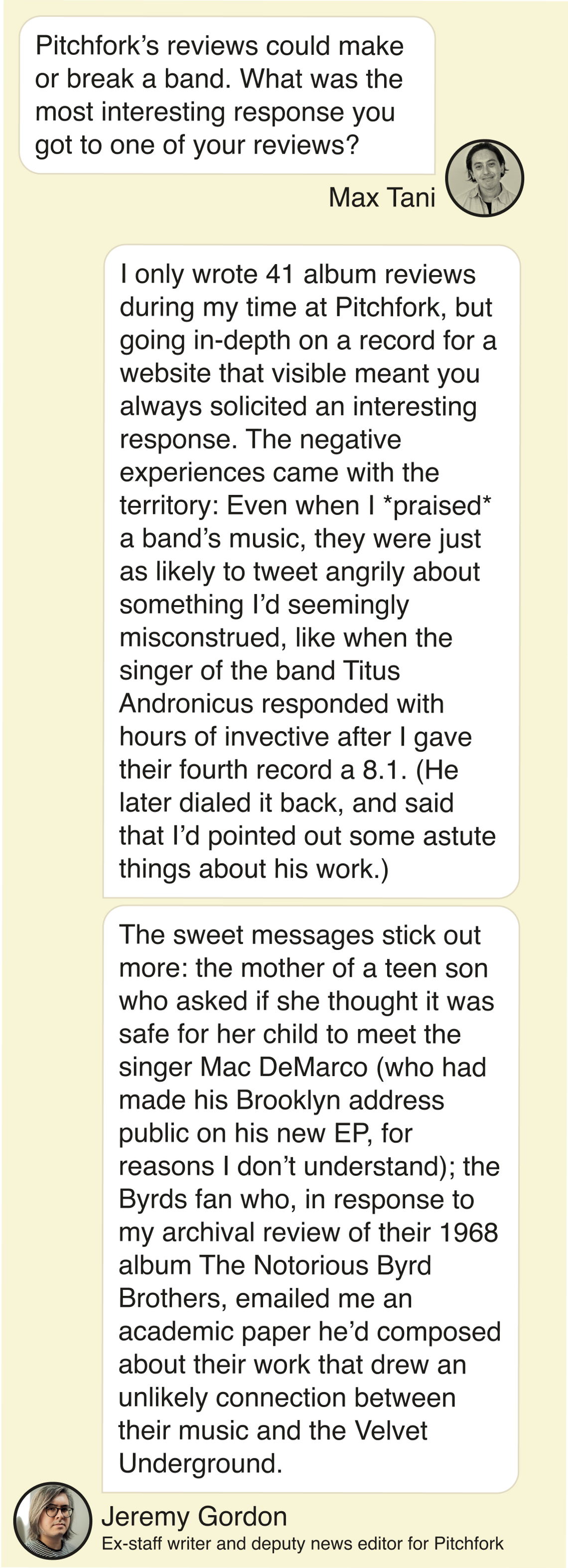 ⁛ NewsLost in Translation, Dangerously: An important Atlantic piece by Yair Rosenberg finds that the most extreme and widely circulated statements by Israeli government officials about Palestinians — including the “human animals” line and a biblical reference to Amalek — have been mistranslated or taken wildly out of context across the prestige Western media. It’s a symptom of an ecosystem that pushes forever toward polarization, and runs both ways: Early claims of 500 deaths in a hospital explosion stemmed from a misunderstanding of a spokesman for the Hamas-run Gaza health ministry, and went everywhere. You can find real genocidal statements from some Hamas leaders and from figures in Israeli politics, but Rosenberg’s piece is a hair-raising look at how the media systematically elevates, amplifies, and distorts the most extreme views — this is hardly unique to the Middle East — feeding a view of conflicts that can’t be resolved by politics. The Post’s Smorgasbord: New Washington Post CEO Will Lewis will focus on improving the packaging of the Washington Post’s existing journalism, rather than expensive new initiatives, he said in a public conversation with the FT’s Matt Garrahan in Davos last Tuesday. Lewis has yet to lay out a broader plan, but said he saw two relatively quick product fixes. First, “We have a luscious smorgasbord of journalism” that can be “quite difficult to find,” he said. Second, “most people get the same kind of subscription offer,” and the Post will switch to a more technically dynamic pricing strategy for its subscriptions. Lewis said the Post could do more to highlight its coverage of climate, well-being, and sports — “but never putting at risk the core political policy, investigations offering.” (This being Davos, Lewis added that his personal priority for wellness was ensuring that his gin and tonic be well mixed.) Shrinking Middle: Ezra Klein laments Conde Nast’s decision to roll up iconic millennial music blog Pitchfork into GQ, noting that it’s yet another sign of media’s rapidly shrinking middle tier. “You can thrive being very small or very big but it’s extremely hard to even survive between those poles,” he writes. “That’s a disaster for journalism — and for readers. The middle can be more specific and strange and experimental than mass publications and it can be more ambitious and reported and considered than the smaller players. The middle is where a lot of great journalists are found and trained. The middle is where local reporting happens and where culture is made rather than discovered.” Ukraine’s Media Wars: A spate of threats and smear campaigns against Ukrainian journalists has made “many in Kyiv concerned about a re-emergence of bad-old-days-type antics,” the FT’s Chris Miller wrote on X this week. Last Sunday, investigative journalist Yuriy Nikolov, whose reporting on corruption contributed to the resignation of Ukraine’s former defense minister in September, was threatened by several men, who covered the door of his apartment with signs calling him a “traitor” and “provocateur.” The investigative news outlet Bihus.info said its reporters had been targeted with wiretaps and hidden cameras. President Volodymyr Zelenskyy has promised an investigation will be launched, and said that “any pressure on journalists is unacceptable.” LAT Turmoil: The abrupt departure of editor Kevin Merida from the LA Times earlier this month preceded a waive of internal turmoil that has sparked a daylong staff walkout. Last week, 90% of LA Times unionized staffers participated in a daylong work stoppage in protest of massive proposed cuts by the union. But some more junior unionized staffers remain worried about an ominous deal put forward by the paper before the walkout: Waive some seniority protections in the union contract that would lay off newer staffers before those who have been at the paper for longer, or face an additional 50 layoffs. Some staffers told Semafor that while they supported the walkout, they were concerned that the union’s refusal to budge on seniority could result in a large chunk of younger staffers losing their jobs. In a statement to Semafor, union chief Matt Pearce noted that the LAT editorial union suggested a buyout program similar to the one that helped the Washington Post avoid layoffs earlier this year, but the Times has not agreed. He said the union believes the paper is not being transparent about the number of people it wants to lay off, and could take advantage of a concession on seniority. “They won’t fess up on the record to the extraordinary size of the layoffs they’re contemplating, so my colleagues feel pretty strongly that they don’t have the information they need to make an intelligent decision, especially when management wants to shove the world’s biggest trolley problem in our laps,” he said. “The company also had an enormous revenue problem that they genuinely need the community’s help to fix, and that’s not going to change even if we did agree to make it easier for them to fire our own members.” A source at the Times, though, said that the company proposed buyouts prior to layoffs if the Guild would agree to increase the number of exemptions to the standard layoff agreement, which prioritizes seniority. The company argued that buyouts alone, without the additional exemptions, would be costly and potentially increase the number of positions to be laid off, while buyouts in coordination with an increase in exemptions would reduce the number of layoffs by up to 50 positions. Meanwhile, the LA Times is continuing to search for a new top editor while being run by a four-person management team. Semafor has learned that one member of the paper’s interim management team, Shani Hilton, was already slated to leave before Merida’s sudden departure. AP Clash: At the height of the Ukraine War, the Associated Press brought on a new bureau chief to spearhead reporting on the war from Ukraine’s capital city. But in less than three weeks, the news wire service summoned her to Poland, and fired her. Sabra Ayres, a journalist who had covered Russia and Ukraine for the Los Angeles Time and joined the Associated Press in Oct. 2022, told Semafor that she did not know the reason for her dismissal, but believed it was the result of a clash with the AP’s then-vice president of international news, Ian Phillips, over the assignment of one of the bureau’s junior journalists to a location near the war’s front lines. In an interview with Semafor, Ayres said she was deeply disappointed by the episode, and confused about the outlet’s reason for firing her. She said that the AP agreed to tell her why she was being fired if she signed a non-disclosure agreement, but she rejected the offer. She says she believes her fears were justified: Members of the AP team that was dispatched to Southern Ukraine did end up in a dangerous situation and were fired upon by Russian troops, though the young Ukrainian journalist was not with them at the time. Last year, she filed a complaint with the US Equal Employment and Opportunity Commission arguing that she was discriminated against and unlawfully fired without explanation. The AP pushed back on Ayres’ account, saying that while the publication does not discuss personnel matters, her account was “completely inaccurate.” “The whole thing has been heartbreaking for me,” Ayres said. Das Magazin: The rapper and polymath Himanshu Suri (known as Heems in the alternative hip-hop group Das Racist, if you were into that) will launch a new editorial brand on Tuesday, “highlighting his journey with self-care through music, fashion, and organic Ayurveda products from India.” Meghna Rao will be editor-in-chief of Veena, which Suri told me in an email will be “unencumbered by the pressures of advertisers, powered instead by the products” he curates and designs. ⁜ TechAI Art is the new stock photography: The designer Oliver Reichenstein offers a critique of “the pure AI image.” Among his notes: “An AI hero image is a comedian opening the show with a knock-knock joke.” ✰ HollywoodMan bites dog: A heir comes to Hollywood and … doesn’t lose his fortune, the Wall Street Journal writes of David Ellison. ✦ PublishingTelegraphic: The former chancellor George Obsborne was going to write a diary for The Spectator, then pulled out. “Something had come up, he said. But what? The next day’s papers brought the news: he has been hired to advise the Emiratis in their bid to buy this magazine and the Telegraph,” Spec editor Frasier Nelson writes, going on to question a deal that would put a foreign government in control of a U.K. publication: “I’ve met Jeff Zucker, the American to whom I’d report as editor. He strikes me as decent, professional, respectful of The Spectator’s traditions and not the type to take editorial orders from the Emiratis. As editor, I’d certainly not enact any such orders. But either of us could be replaced in two shakes of a camel’s tail – and this is the problem….” Maybe Osborne should have kept his deadline. Korrektur: Our friends at Puck, quoting Ben on the subject of our events video push, were perhaps tweaking us as pretentious globalists when they included the line “reached in Davos.” But we must insist: It was, erm, Zurich. | 







